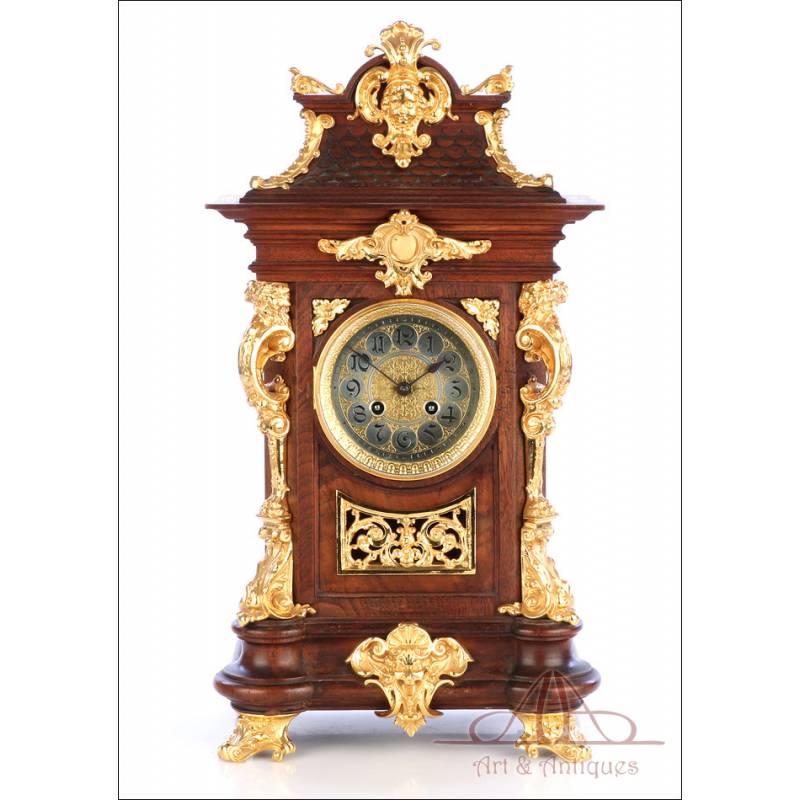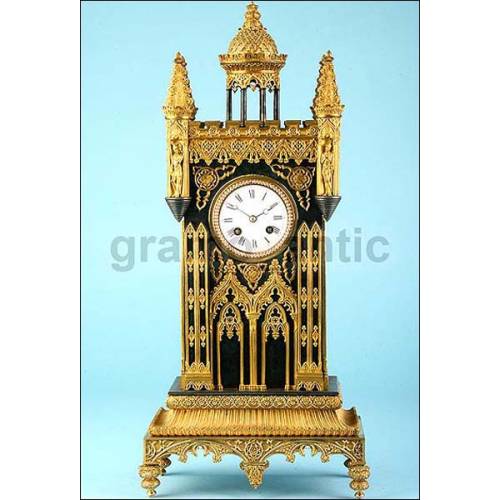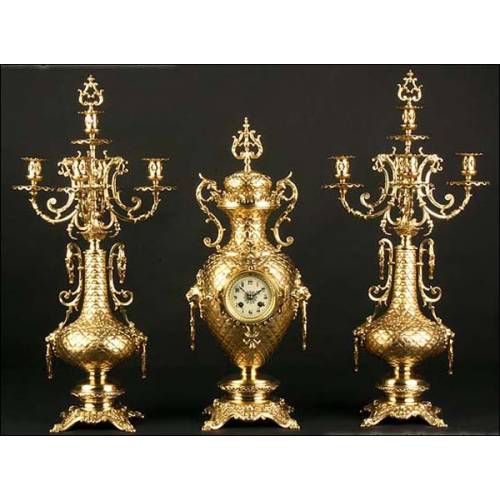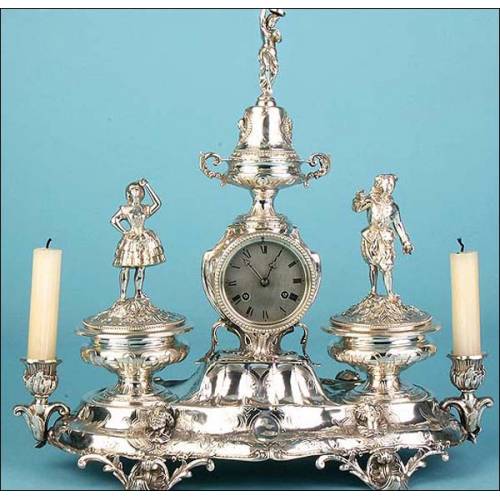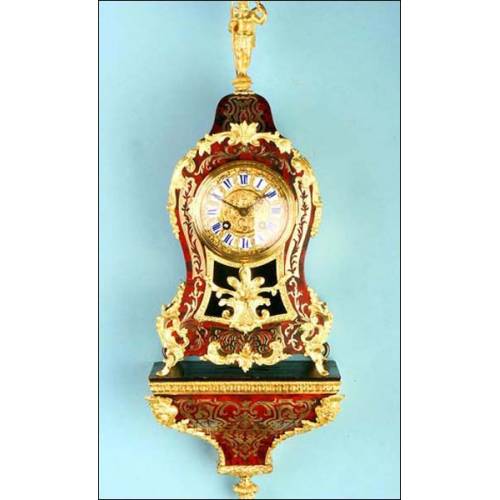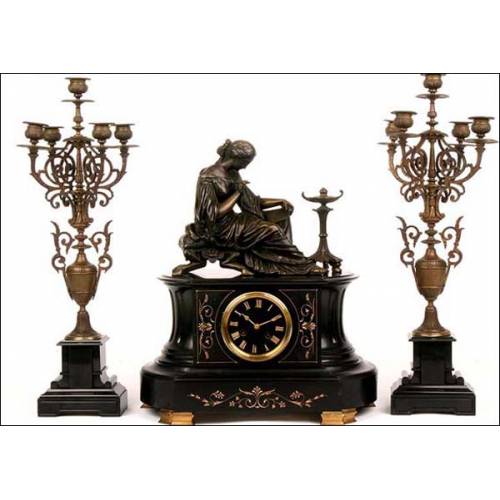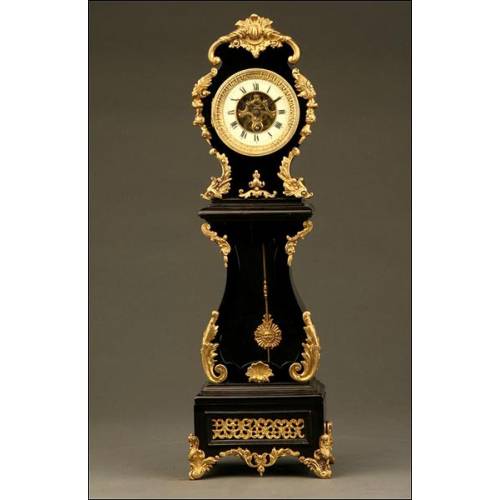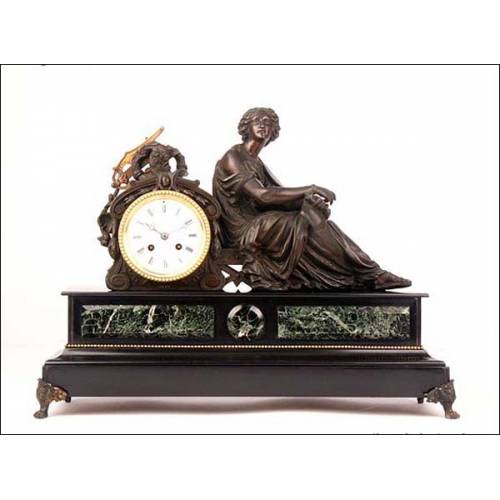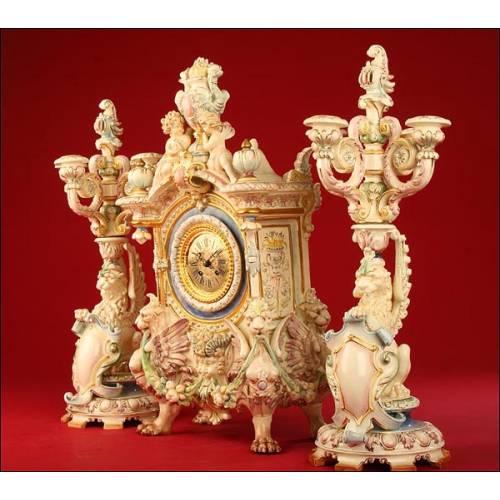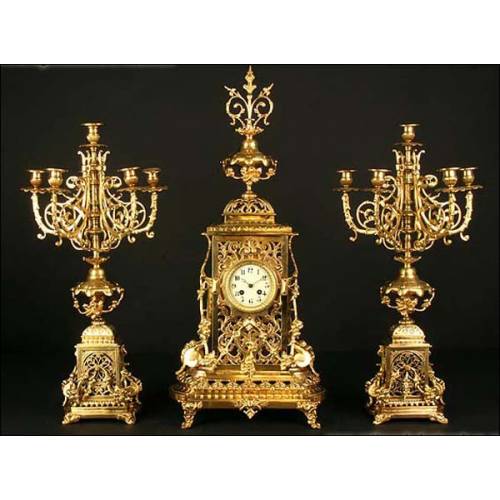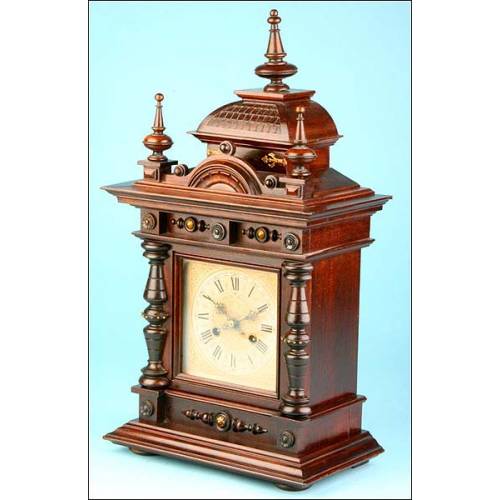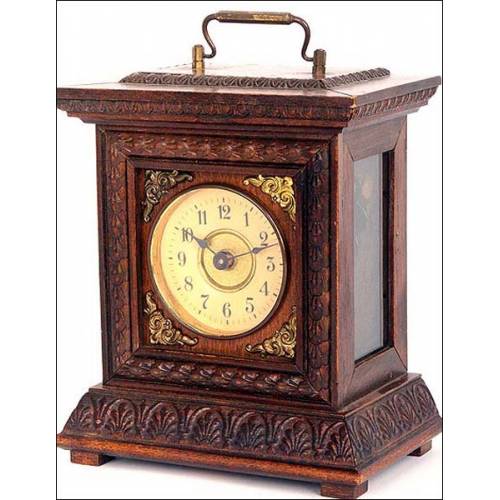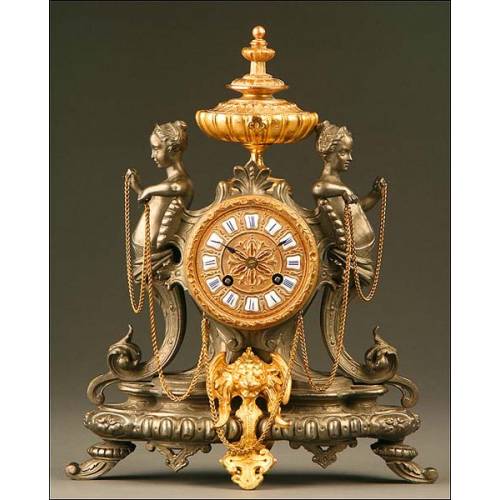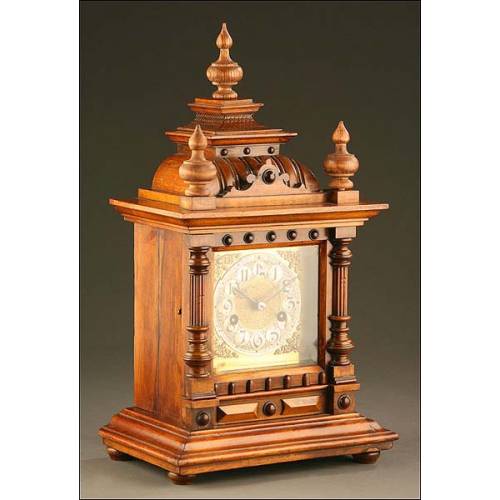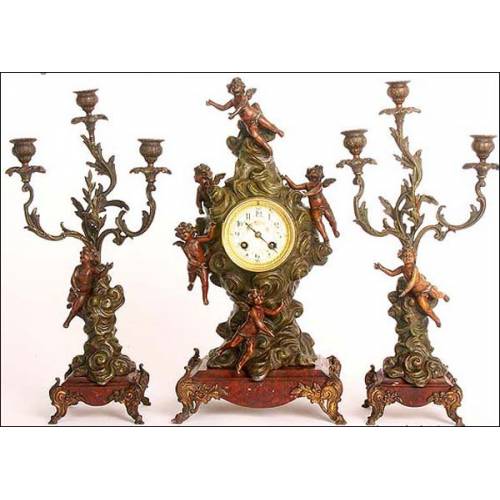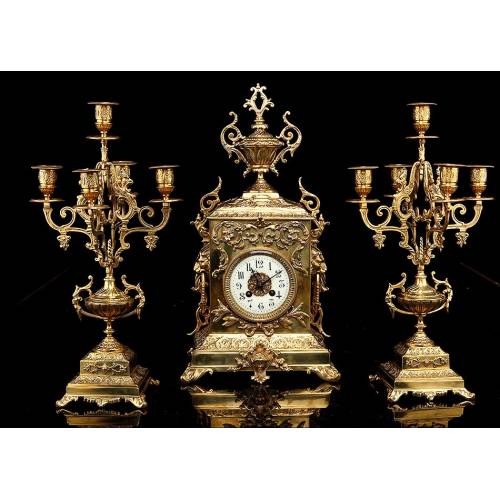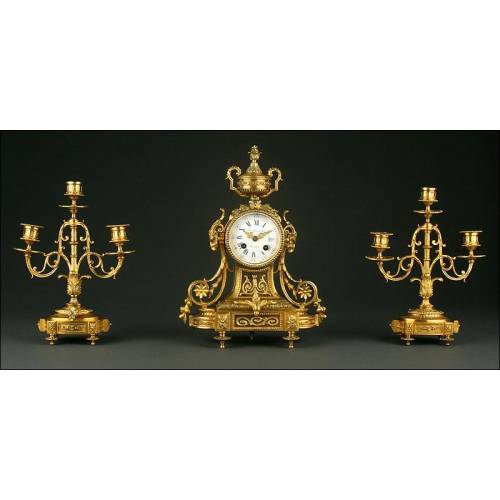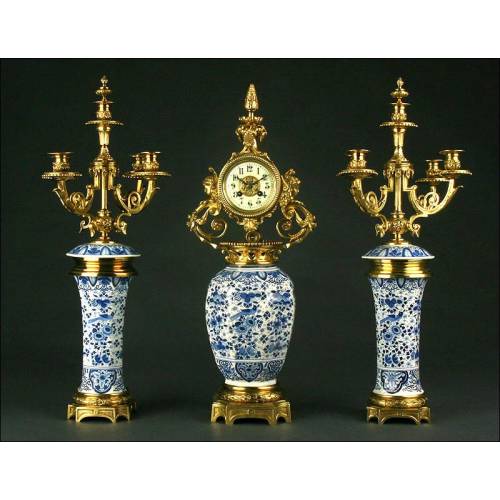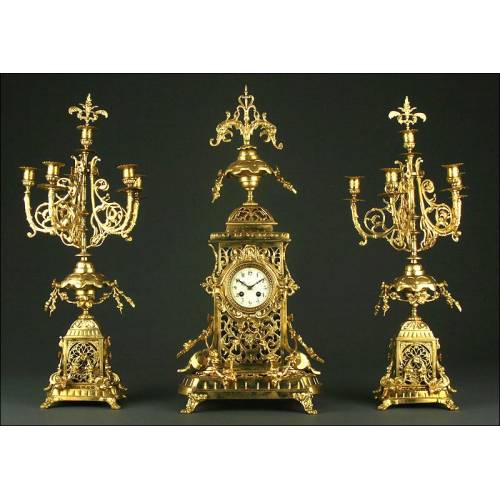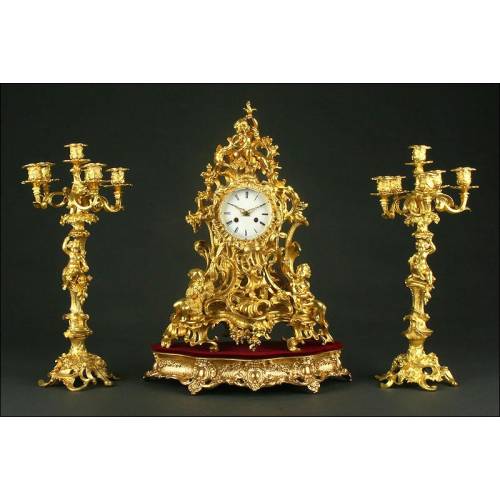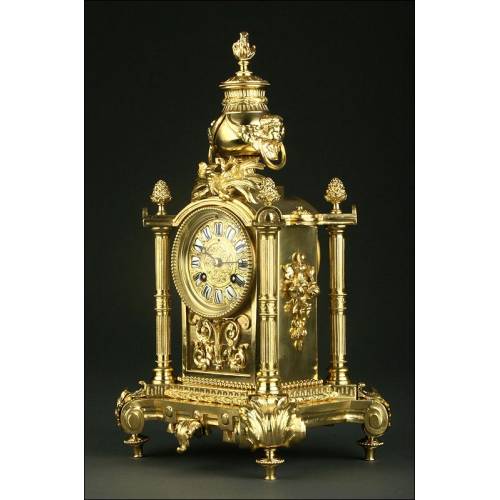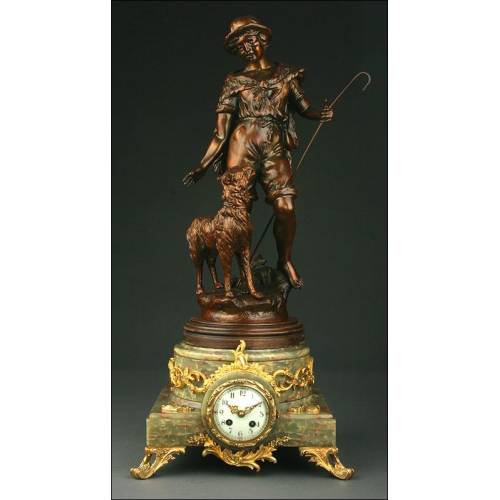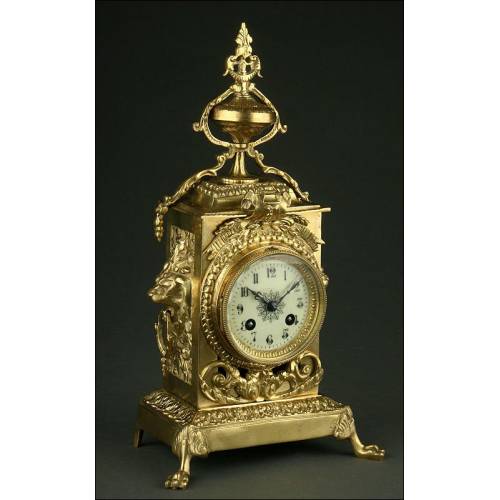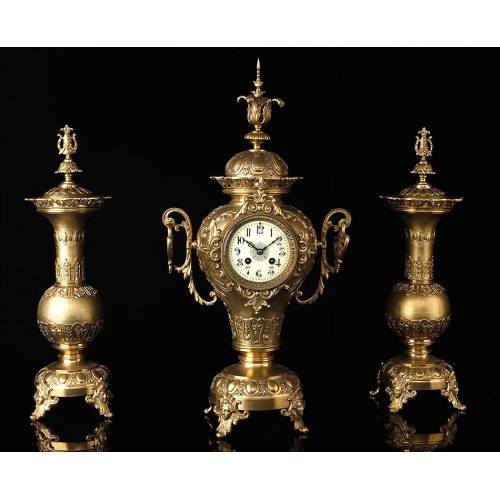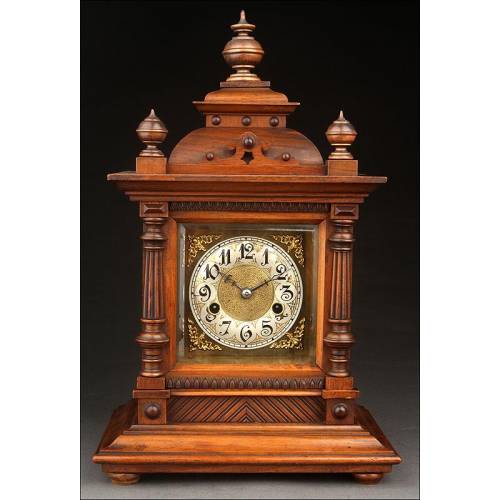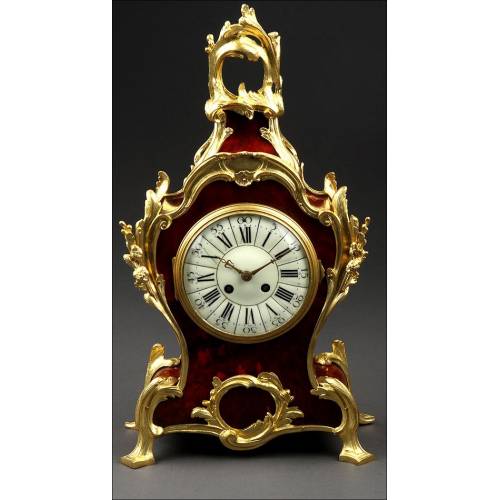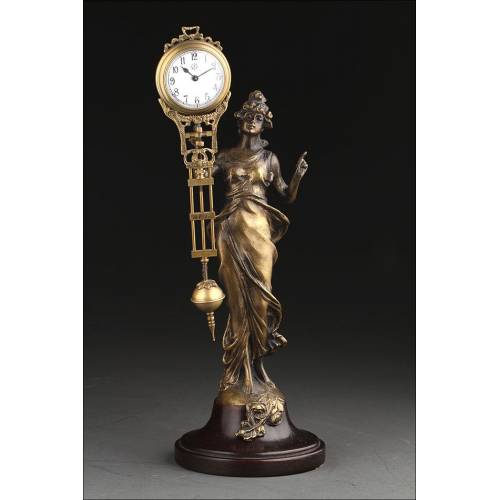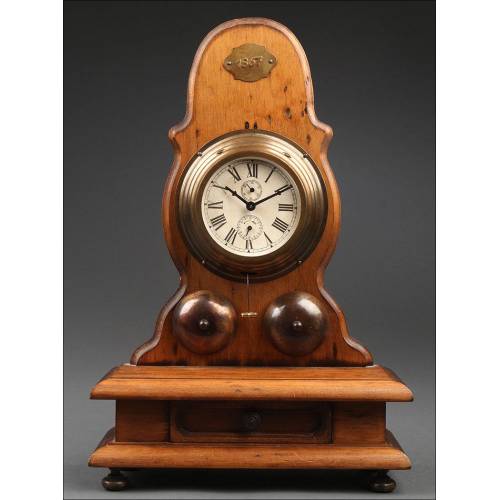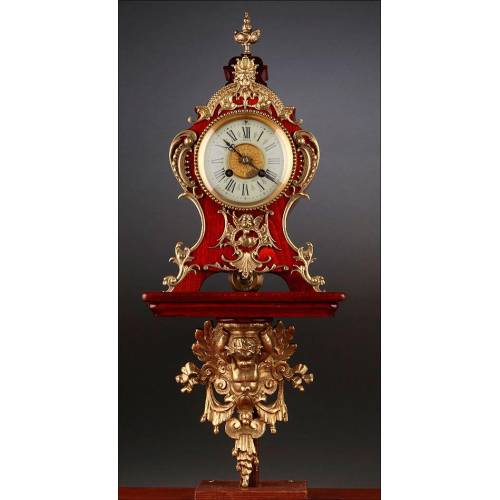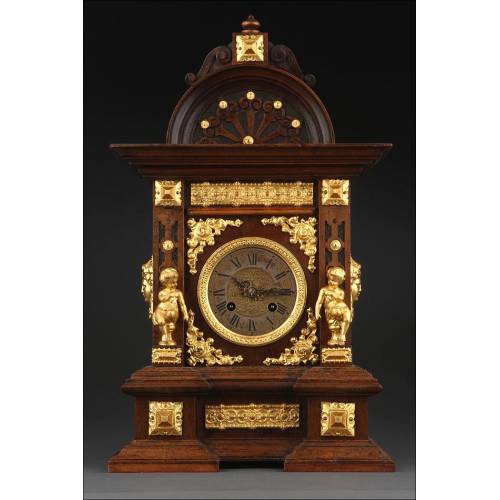D-460
Antique German Lenzkirch Mantel Clock. Germany, Circa 1900
Awesome carved-wooden Lenzkirch mantel clock with ormolu embellishments. With hour and quarter repeater.
Sold!
Wonderful antique German Lenzkirch mantel clock made in Germany circa 1900, in excellent condition and fine working order. This is a valuable collectors piece Lenzkirch clocks are considered true works of art. The clock that we can see in the images has a quarter repeating movement and stands out for its gorgeous ormolu decoration, a feature which provides the dark wooden box with light and contrast. The box is made of solid oak wood; at the side and front panels we a can see the lovely veneer and the different color shades of the wood. It is shaped as a small temple, with milled and carved base and hip-roof-shaped crowning part. The ormolu embellishments are orderly scattered all over the front side of the clock: the curved legs, the side pieces, the openwork plate which closes the opening for the sound, the cameo over the dial and the top mask. The metal is in impeccable condition and stands out for its shiny golden finish. The dial is made of brass and silvery metal and has black painted Arabic numerals and poire black hands. At the back of the clock we can see a small door which lets us reach the movement. The circular plate bears the engraved manufacturers name and logo, the word LENZKIRCH over a branch with an acorn and the initials A. G. U. (Aktiengessellschaft fur Ukrenfabrikation). This superb antique German Lenzkirch clock is not only the perfect element to decorate a sideboard or a mantelpiece. It is also a real collectors item, an exclusive and very sought after piece. Dimensions: Width: 11 in / 28 cm. Depth: 6.3 in /16 cm. Height: 20 in / 51 cm. History of Lenzkirch clocks Lenzkirch clocks were of such fine craftsmanship, wonderful ornamentation, and superb "in-house" design that they rank at the top of all German-made regulators. In fact, the varied movements and richly decorated clock cases practically priced them out of the market. Factory-produced clocks were first credited to the Lenzkirch Uhrenfabrik, located in the small town of Lenzkirch in the German Black Forest region. On August 31, 1851 Eduard Hauser and five partners created Lenzkirch Uhrenfabrik. In 1856 another partner joined the firms. Under the leadership of Hauseer, the Lenzkirch clock factory gained a reputation that no other German factory had acquired so far. It came into full production about 1860, and Lenzkirch was awarded gold medals in the industrial exhibitions in 1860 in Villingen and 1861 in Karlsruhe. Edward Hauser retired March 1, 1899. In 1900 the company employed 480 workers. In the 1930s, the competition in this clockmaking area of the Black Forest eventually supposed the beginning of the end for Lenzkirch. In the middle of the Great Depression in 1932 the buildings were sold by the Junghans Brothers, who operated it as a satellite factory for about four years, and then the famous factory of the Lenzkirch Clock Company was gone. Today, Lenzkirch wooden clocks are considered the most beautiful clocks of their time and are highly appreciated by experts and collectors.

